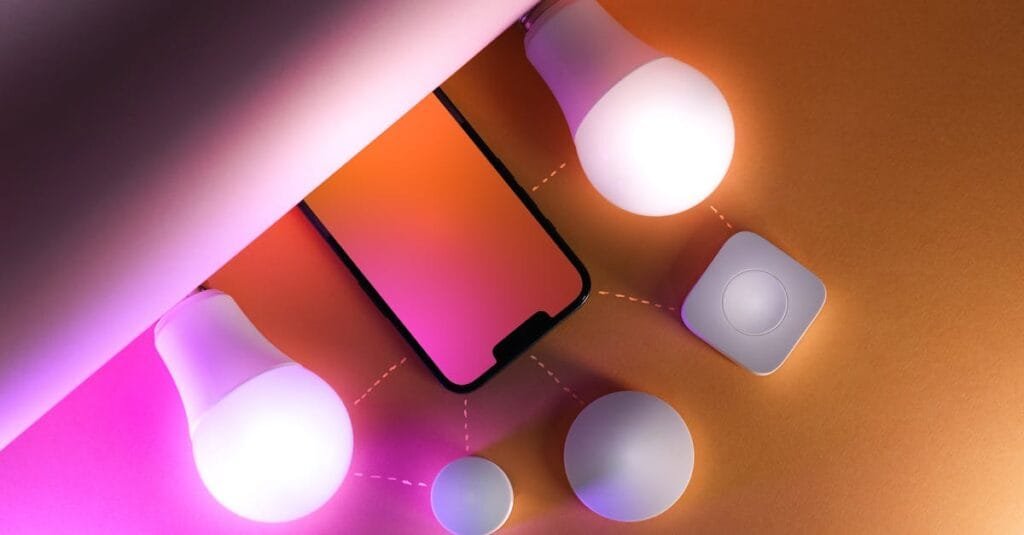Imagine walking into a shared service center where every process hums like a well-oiled machine. Each component meshes seamlessly, and technology isn’t just an accessory; it’s the backbone that supports every move. That’s the future we’re working towards, and IoT integration plays a crucial role in making that vision a reality.
I’m Vikrant Aglawe, and I’ve spent over 20 years in the outsourcing and offshoring industry, setting up and leading large-scale shared service centers for global organizations. Trust me when I say, the journey to IoT integration isn’t just a nice-to-have—it’s a game changer in enhancing service delivery in the GBS realm.
The Importance of IoT in GBS
First off, let’s break down what IoT (Internet of Things) actually means in the context of GBS. It’s not just about smart fridges or connected cars. In our world, it’s about using interconnected devices to gather real-time data that can transform how we deliver services. Think about it:
- Streamlined Processes: IoT helps in monitoring workflows actively. When a process slows down, you get alerts instead of waiting for a monthly report.
- Enhanced Decision-Making: With real-time data at your fingertips, decision-making isn’t guesswork; it’s informed.
- Proactive Maintenance: Anticipating equipment failures before they happen saves time and money. You’re not reacting; you’re preventing.
This level of insight transforms your operations into something that can anticipate issues rather than just react. It’s about paving the way for innovative solutions to everyday problems.
Getting Started with IoT Integration
The road to successful IoT integration isn’t without bumps, but let’s break it down into manageable steps:
- Identify Objectives: What do you want to achieve? Improved efficiency? Better customer experience? Define your goals first.
- Invest in Technology: You need the right tools. Look for sensors, analytics platforms, and connectivity options that suit your needs.
- Build a Team: Collaboration is key. Bring together IT pros and process experts. Have conversations and ensure everyone is on the same page.
- Start Small: Pilot projects are your friends. Test IoT solutions in isolated scenarios before rolling them out organization-wide.
- Measure & Adjust: Keep tabs on performance metrics and be flexible. If something isn’t working, don’t be afraid to pivot.
These steps turn the daunting task of implementing IoT into an actionable plan that feels achievable. You’re inviting innovation into your workplace, making it more agile and responsive. The beauty of shared services transformation is how it creates ripple effects throughout the organization.
Real-World Examples of IoT in GBS
Let’s get into the good stuff—real examples where companies embraced IoT and reaped sweet rewards. Take a look at a global logistics firm. By integrating IoT sensors throughout their shipping process, they could track shipments in real time. This transparency improved customer satisfaction by keeping clients informed through every step. Every time a package gets delayed or rerouted, customers appreciate being in the loop, leading to high retention rates.
Another example is in finance compliance. Organizations are using IoT devices to automate data collection, reducing manual effort and error. As reports are generated in real-time, the compliance checks happen almost instantaneously. Gone are the days of looking into spreadsheets for hours at a time.
These stories aren’t isolated incidents; they reflect shifting paradigms in operational efficiency. It’s that level of integration and awareness that lets GBS centers shine.
Challenges and Considerations
Now, let’s keep it real. Not everything about IoT integration is sunshine and rainbows. There are hurdles you’ll need to jump:
- Data Security: With more connected devices, securing data becomes critical. Cyber threats are ever-present, and protecting sensitive information is paramount.
- Change Management: People are resistant to change. When introducing new tech, ensure that training and support are in place to facilitate smooth transitions.
- System Compatibility: Not every tool is built the same. Ensure your existing systems can integrate smoothly with new IoT solutions.
Recognizing these challenges upfront helps you strategize better and build a robust plan that addresses the inevitable bumps along the way.
Elevating Customer Experience Through IoT
Customer experience is a buzzword, but it’s more than just a concept; it’s a pillar of successful GBS service delivery. IoT can revolutionize customer interactions. Picture this:
- Personalized Offerings: With data from IoT devices, organizations can tailor services to individual customer preferences. More personalized services mean boosted satisfaction.
- Real-time Alerts: Ever gotten a message about delays? With IoT, you can inform customers proactively when issues arise, not after they complain.
- Feedback Loops: Collect data automatically via connected devices. Regular feedback lets you adjust services swiftly to meet customer needs.
With IoT, customer experiences transform from reactive to proactive. It’s not just about solving problems but anticipating needs, creating loyal customers.
The Future of GBS with IoT
The shared services landscape is evolving at breakneck speed. Embracing IoT isn’t just about keeping up; it’s about thriving. Think about how GBS centers can position themselves as leaders in this digital revolution. As more organizations recognize the power of real-time insights, the demand for integrated IoT solutions will surge.
Are you ready to be part of that growth? To create shared service models that aren’t just reactive but visionary? The journey starts now.
Making the Leap
If you’re in the trenches—whether as an associate, process expert, or SME—start looking at how your daily operations can leverage IoT technologies. Even incremental changes can lead to major efficiency gains. And remember, it’s about humanizing the data, making it relatable, and ensuring that your team understands the ‘why’ behind the change.
Let’s face it—navigating IoT integration isn’t just about tech jargon; it’s about connecting people, processes, and technology in meaningful ways. When you think of your service delivery model, picture the future. Picture what’s possible. That’s the mindset needed to drive genuine transformation.
For more insights and strategies on shared services transformation, innovation, and leadership, check out THEGBSEDGE. It’s where the conversation about enhancing service delivery never stops.


